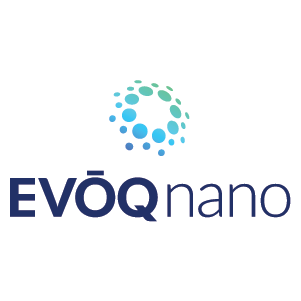
EVŌQ Nano Announces That Its Antimicrobial Medical Device Platform Demonstrates Success Against the Leading Cause of Healthcare-Associated Infections
February 22, 2024
Novel Nanoparticle Platform Shows Efficacy Against Antimicrobial Resistance; Potential to Disrupt the $29 BillionCatheter Market
SALT LAKE CITY, Feb. 22, 2024 /PRNewswire/ — EVŌQ Nano, a nanoscience company that engineers novel nanoparticles for the life, material, and textile science industries, today announced its antimicrobial medical device platform has demonstrated effectiveness against the world’s leading pathogens implicated in healthcare-associated infections (HAIs), which are some of the most common complications of hospital care.
More than 1 million HAIs occur annually in the U.S., causing significant morbidity and mortality. The majority of HAIs are associated with indwelling devices, with catheter-associated urinary tract infections (CAUTIs) representing the most common type.1 Rising antimicrobial resistance has compounded this health threat — as up to one-third of CAUTIs in the U.S. are drug resistant,2 with annual treatment cost exceeding $13 billion.3
“For nearly 30 years, companies have tried to create antimicrobial devices, but the performance never proved effective. Our nanoparticle technology represents an exciting innovation that could profoundly reduce infections associated with medical devices like catheters without contributing to antibiotic resistance,” said Shaun Rothwell, CEO of EVŌQ Nano. “With its proven ability to resist microbial growth and biofilm formation without triggering antimicrobial resistance, this platform has the potential to significantly impact device-related infections — much like the antibiotic revolution transformed infectious disease treatment a century ago.”
By infusing EVŌQ Nano’s proprietary nanoparticle, EVQ-218, throughout the polymer itself, medical devices are extrinsically equipped with antimicrobial protection that has proven to be effective against the most prevalent pathogenic microorganisms. The company is currently targeting the $29 billion catheter market, expected to reach $50 billion by 2031.4
Strong Antimicrobial Efficacy
In collaboration with the world’s leading catheter manufacturers, extensive lab testing on catheters, luers, and fittings manufactured with EVŌQ Nano’s EVQ-218 nanoparticle infused throughout the polymer, demonstrated:
- Strong antibacterial, antifungal, and antibiofilm efficacy
- Staphylococcus aureus: 7-8 log reduction
- Pseudomonas aeruginosa: 6-7.5 log reduction
- Candida albicans: 5-6.5 log reduction
- Broad-spectrum activity against 64 bacterial strains tested
- No degradation of antimicrobial activity; sustained presence for the life of the product
Novel Mechanism of Action
Existing antimicrobial solutions for medical devices have fallen short. Coatings slough off, degrade over time, and can only be applied to limited materials. While silver is a proven and powerful antimicrobial, current antibacterial catheters externally coated with silver lose efficacy once inserted due to natural sloughing of the material coupled with the short life of silver ions. This combination hinders the antimicrobial activity of current products.
EVQ-218 is the first and only non-ionic silver nanoparticle. Extensive studies characterize EVQ-218 as a new form of silver nanoparticle (AgNP), manufactured with EVŌQ Nano’s multi-patented nanofabrication process that requires only laser energy, ultrapure water, and pure silver metal.5 Unlike standard silver nanoparticles, EVQ-218 has true “bare” silver surface chemistry, with greater group stability that mitigates the need for added stabilizers.5
The discovery and development of a non-ionic silver nanoparticle represents a pivotal innovation, unlocking the full therapeutic potential of silver without its detrimental trade-offs.
EVQ-218 delivers high antimicrobial efficacy without ion emissions.6,7 Its efficacy is rooted in EVQ-218’s ability to disrupt bacteria’s metabolic processes without triggering antimicrobial resistance.
- EVQ-218 stops bacterial growth by sequestering sulfur.
- The sequestration of sulfur inhibits metabolic activity within the bacterial cell without compromising cell structures or lysing the cell wall. This avoids activation of bacterial mutations that contribute to antimicrobial resistance.
- In contrast, nanoparticles with silver ions rupture cell walls, triggering activation of resistance pathways.
By incorporating antimicrobial protection into the material manufacturing process, EVŌQ Nano’s technology enables the next generation of medical devices to more effectively guard against disease.
About EVŌQ Nano
EVŌQ Nano is a nanoscience company that engineers novel nanoparticles for the life science, materials science, and textile science industries. The company’s multi-patented, high-volume laser nanofabrication process creates nanoparticles that are uniformly sized, surfactant-free, with consistent spherical morphology, and no ion emissions under standard and stressed conditions. These properties represent a significant advancement in nanoscience with the potential for a wide range of applications. To learn more, visit evoqnano.com.
Media Contact
Capwell Communications
media@capwellcomm.com
References
- Health Care-Associated Infections. Patient Safety Network. Published September 7, 2019. Accessed November 21, 2023. https://psnet.ahrq.gov/primer/health-care-associated-infections
- Werneburg GT. Catheter-associated urinary tract infections: current challenges and future prospects. Res Rep Urol. 2022; Apr 4;14:109-133. doi: 10.2147/RRU.S273663. PMID: 35402319; PMCID: PMC8992741
- Estimating the additional hospital inpatient cost and mortality associated with selected hospital-acquired conditions. Agency for Healthcare Research and Quality. Content last reviewed November 2017. Accessed January 19, 2024. https://www.ahrq.gov/hai/pfp/haccost2017.html
- Darandale M, Talekar D, Deshmukh R. Catheters Market Research, 2031. Allied Market Research. Published May 2022. Accessed December 6, 2023. https://www.alliedmarketresearch.com/catheters-market
- Kennon BS, Niedermeyer WH. EVQ-218: Characterization of high-energy nanoparticles that measure up to NIST standards. ACS Omega. 2024. doi: 10.1021/acsomega.3c07745
- Niedermeyer W, inventor; ATTOSTAT Inc., assignee. Method and apparatus for production of uniformly sized nanoparticles. US patent 9,849,512. November 9, 2017.
- Dimpka CO, Calder A, Gajjar P, Merugu S, Huang W, Britt DW, McLean JE, Johnson WP, Anderson AJ. Interaction of silver nanoparticles with an environmentally beneficial bacterium, Pseudomonas chlororaphis. J. Haz. Mat. 2011; 188:428-435. doi: 10.1016/j.jhazmat.2011.01.118
SOURCE EVŌQ Nano